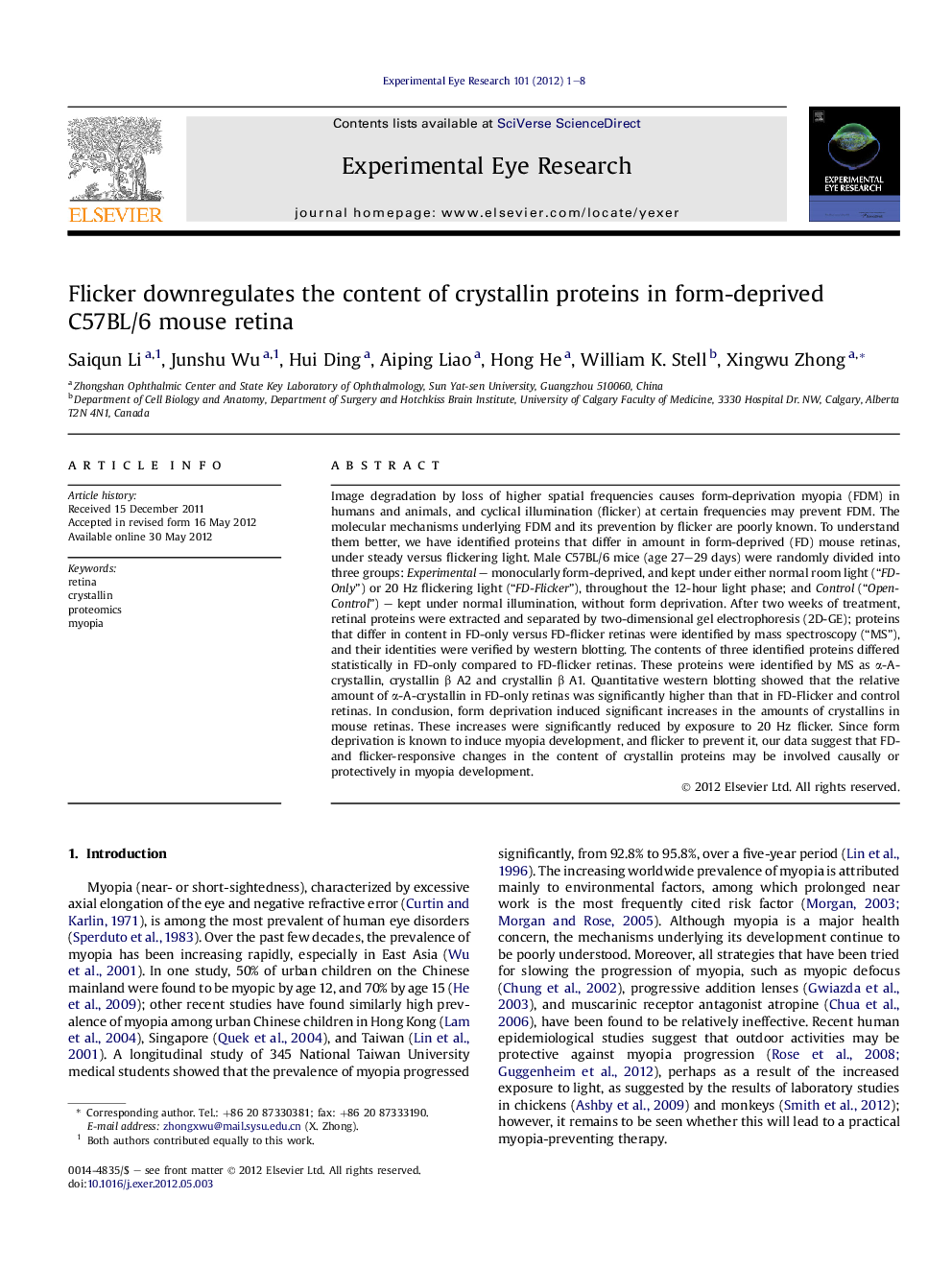| Article ID | Journal | Published Year | Pages | File Type |
|---|---|---|---|---|
| 4011336 | Experimental Eye Research | 2012 | 8 Pages |
Image degradation by loss of higher spatial frequencies causes form-deprivation myopia (FDM) in humans and animals, and cyclical illumination (flicker) at certain frequencies may prevent FDM. The molecular mechanisms underlying FDM and its prevention by flicker are poorly known. To understand them better, we have identified proteins that differ in amount in form-deprived (FD) mouse retinas, under steady versus flickering light. Male C57BL/6 mice (age 27–29 days) were randomly divided into three groups: Experimental – monocularly form-deprived, and kept under either normal room light (“FD-Only”) or 20 Hz flickering light (“FD-Flicker”), throughout the 12-hour light phase; and Control (“Open-Control”) – kept under normal illumination, without form deprivation. After two weeks of treatment, retinal proteins were extracted and separated by two-dimensional gel electrophoresis (2D-GE); proteins that differ in content in FD-only versus FD-flicker retinas were identified by mass spectroscopy (“MS”), and their identities were verified by western blotting. The contents of three identified proteins differed statistically in FD-only compared to FD-flicker retinas. These proteins were identified by MS as α-A-crystallin, crystallin β A2 and crystallin β A1. Quantitative western blotting showed that the relative amount of α-A-crystallin in FD-only retinas was significantly higher than that in FD-Flicker and control retinas. In conclusion, form deprivation induced significant increases in the amounts of crystallins in mouse retinas. These increases were significantly reduced by exposure to 20 Hz flicker. Since form deprivation is known to induce myopia development, and flicker to prevent it, our data suggest that FD- and flicker-responsive changes in the content of crystallin proteins may be involved causally or protectively in myopia development.
► We identify three form-deprivation (FD)- and flicker-responsive retinal proteins. ► FD induces significant increases in amount of crystallins in mouse retinas. ► These increases were significantly reduced by exposure to 20 Hz flicker. ► We infer that crystallins are involved causally/protectively in myopia development.
